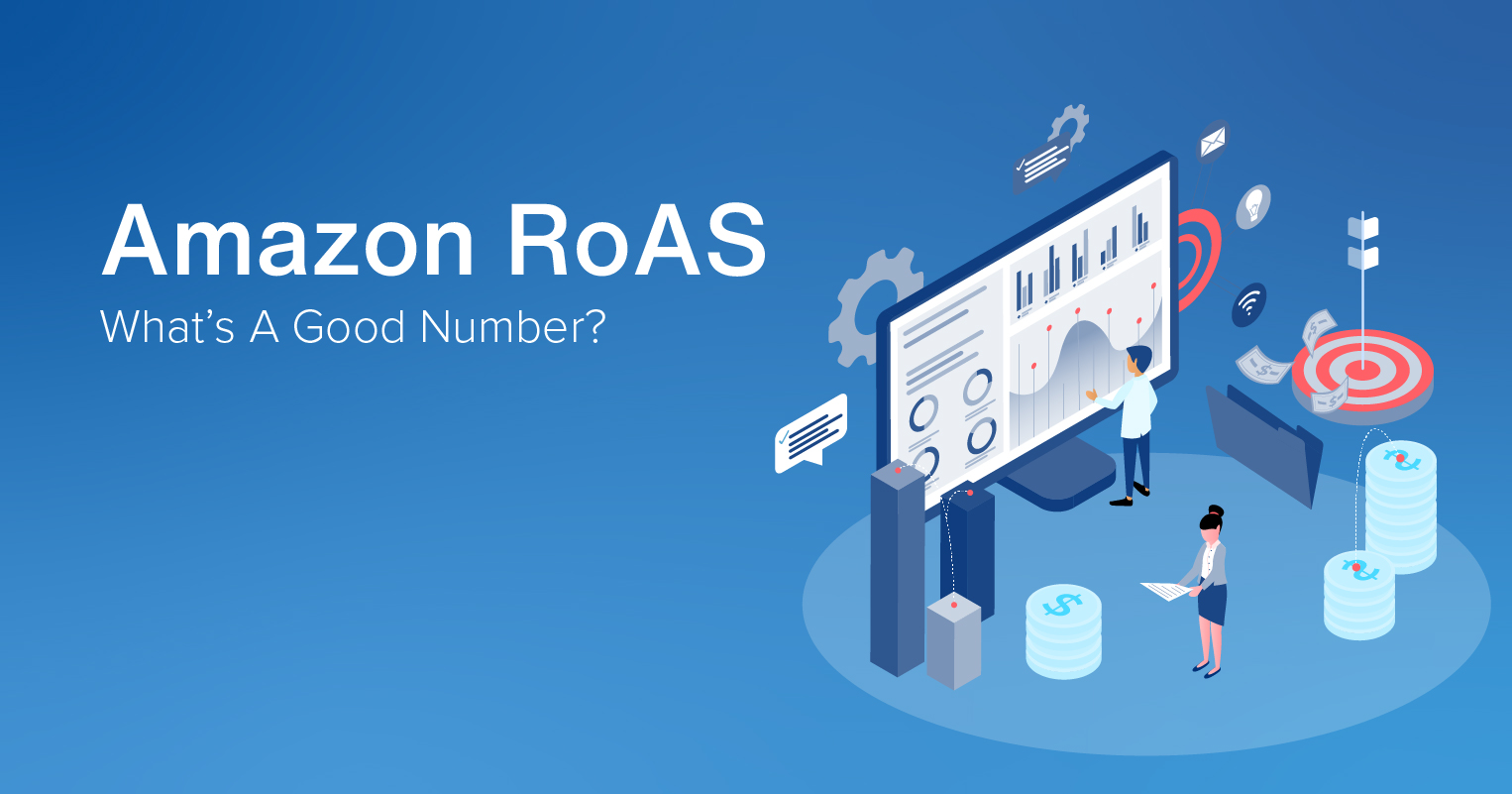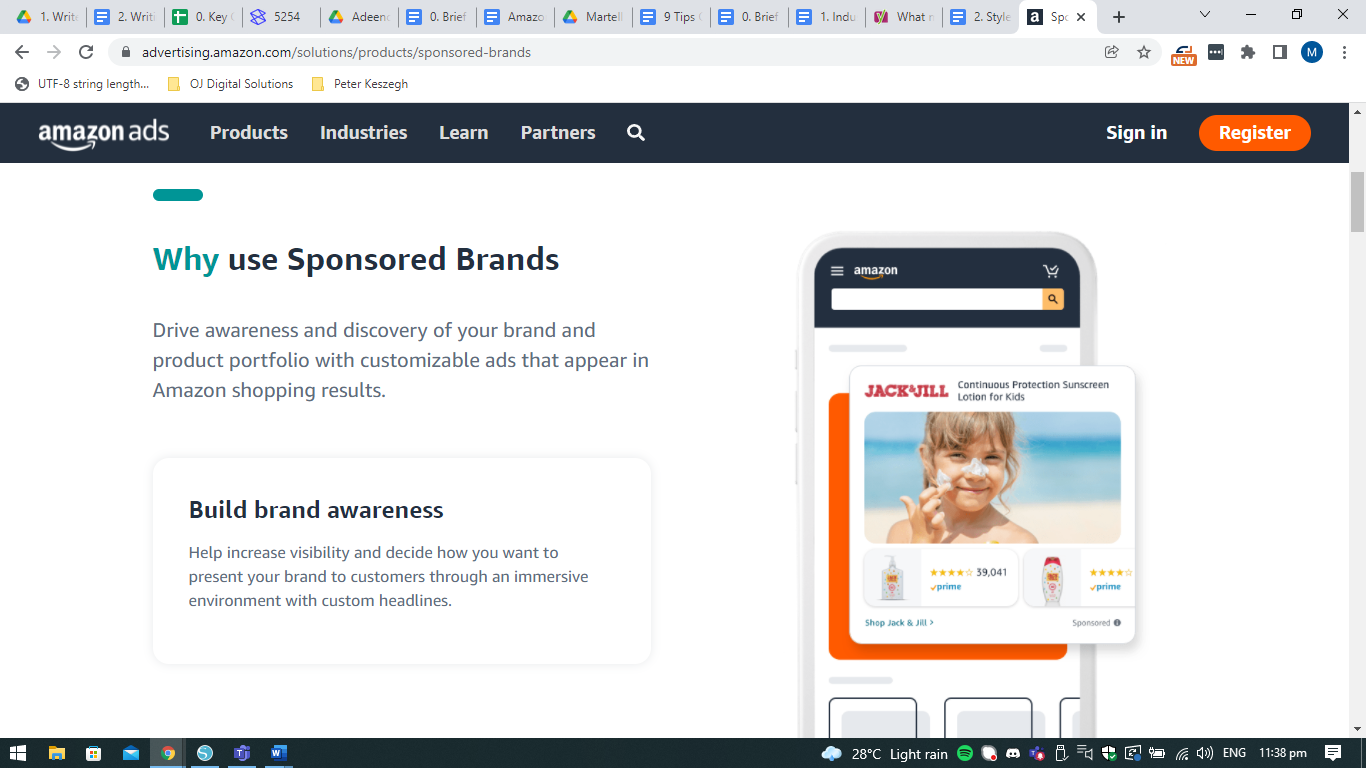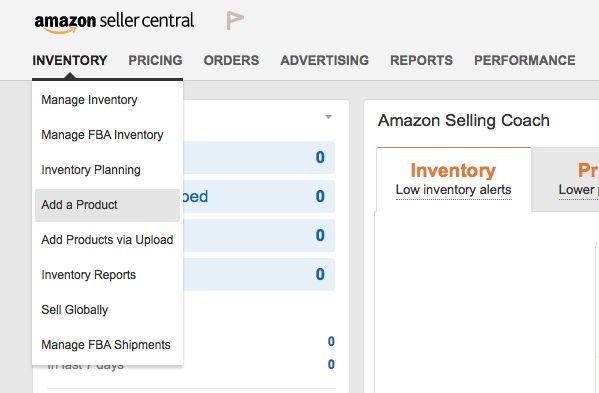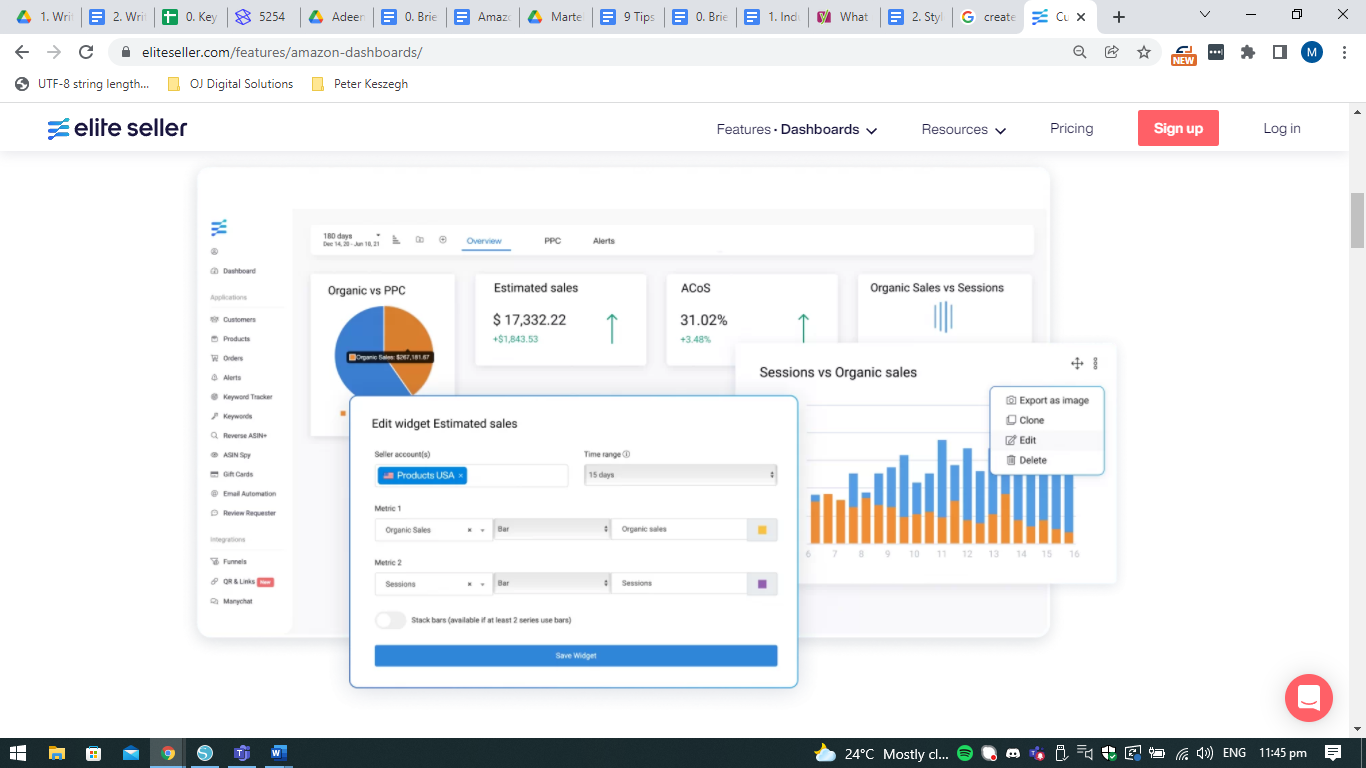Feb 18, 2022

Amazon RoAS
RoAS or Return on Ad Spends measures your sales revenue for every dollar spent on ads. Some Amazon business owners make the mistake of not keeping an eye on their Amazon RoAS – especially when they’re still bringing in profit at the end of the day.
However, a low or negative Amazon RoAS percentage could quickly drain your coffers if you don’t keep a hawk-eye on it.
This article walks you through everything there is to know about your Amazon RoAS and how to ensure you’re making the most on your ad spend.
What is a Good Amazon RoAS?
Every Amazon seller seeks to improve the visibility of their Amazon listing and increase sales, and the best way to do this is by running sponsored ads.
You can gauge whether or not your ad campaign is working by calculating the RoAS. According to the Corporate Finance Institute, a RoAS of 3 or more is generally considered good, meaning that you make three dollars in revenue for every one dollar you spend on ads.
Now, that’s just the baseline for determining a good RoAS. But essentially, a higher RoAS is what you want to aim for.
That said, a high RoAS doesn’t automatically mean that your business is profitable. You still need to factor in costs associated with:
- Campaign necessities such as copywriting, graphic design, etc
- Listing optimization
- Production expenses
- Shipping, labeling, and packaging fees
- Other advertising essentials such as using an Amazon keyword rank tracker
You need to ensure you’re still earning a decent profit after factoring in all of the above costs. Otherwise, a high RoAS won’t mean a thing.
What is RoAS?
RoAS or Return on Ad Spends is a popular financial metric used by Amazon business owners and other digital marketers. True to its name, it is used to assess the effectiveness of marketing campaigns in eCommerce businesses in particular. Since it calculates the revenue generated for every dollar spent on ads, businesses can evaluate whether their marketing campaigns are generating enough revenue in sales.
The idea behind RoAS is simple enough: earn as much revenue as possible per dollar spent on your campaign.
But is it important to keep track of your RoAS even if your business is making profits?
The short answer is YES! It’s always a good idea to keep a close eye on your RoAS as your business grows. If your RoAS drops, it means that you’re spending more on ads but earning less in revenue. This is especially true for Amazon sellers who are still building their brand.
The good news is that your RoAS can help you determine which campaigns are working and which aren’t.
This way, you can focus your ad spends on campaigns that bring in profit – or try to replicate those results with other listings.
How Do You Calculate Amazon RoAS and How is it Different from ACoS?
Calculating your Return on Ad Spend involves a straightforward formula. Simply divide your revenue by your advertising spend. The end number is how much you earn per dollar you spend on advertising.
To make it easier to understand, here’s the Amazon RoAS calculation formula you need to follow:
RoAS = Revenue Dollars/Advertising Dollars
For example, let’s say you’ve earned $350,000 by the end of your campaign – in which you spent around $185,000. With these numbers, your RoAS should be calculated as follows:
RoAS = $350,000/$185,000
RoAS = 1.89
Following our original statement that a good RoAS should be at least 3, it looks like you aren’t doing well on your campaign. Some sellers like to think that as long as you have a score over 1, then you’re in the clear.
While it may mean you’re still earning some money from your campaign, that doesn’t mean you still have a decent profit margin after you’ve taken your deductibles into account.
RoAS is not to be confused with ACoS, which accounts for the money spent on ads to gain a dollar in revenue.
If you want to make things simpler, you could look into tools that automate this metric for you such as Elite Seller. On the other hand, you could also look into Viral Launch vs Jungle Scout to see what the best option is.
How to Calculate Product Profit Margin and Break-Even RoAS?
To determine your break-even RoAS, you must first understand your profit margins. To do this, take your gross revenue in sales and deduct your COGS from it. So let’s say that you’ve made $100 in sales with a COGS of $25,, then your profit margin would be $15 or 15%.
The formula to find your break-even RoAS would be:
break-even RoAS = 1/(gross profit – revenue)
In this case, your break-even RoAS would be 6.67. In other words, you need to earn at least $6.67 per dollar spent on advertising.
Amazon Advertising Products that Produce the Highest RoAS
There are three different ad types available to Amazon sellers who want to advertise their listings on the platform. These include:

- Sponsored brands
- Sponsored products
- Sponsored display
Each of these advertising types operates on a PPC basis, meaning they use Pay Per Click (PPC) ads to attract customers. A study conducted among 3,500 Amazon sellers found that Sponsored Brands produce the highest RoAS out of all three categories.
RoAS by Targeting Type
It’s important to note that the targeting you choose for your campaigns significantly impacts your RoAS. For instance, certain close-match ads may have a significantly higher RoAS estimate. But that doesn’t necessarily mean they’ll be the most effective.
You’ll need to take the time to figure out which works best for you. Furthermore, it’s important to understand that specific ad types will have different targeting options. Let’s say you choose to run a Sponsored Products ad—you’ll be able to choose between manual and automatic targeting options.
At this point, it’s a lot of trial and error supplemented by research. With enough time and effort, you’ll be able to figure out what works best for your business.
RoAS by Product Price
Did you know that your product price plays a huge role in your RoAS? We’ve found that products within the $21 to $30 price range tend to yield the best returns on ad spends. And it makes sense when you think of it this way – the majority of your target audience is probably looking for a good deal.
So instead of focusing all your marketing efforts on high-ticket items, you should consider high-value offers that will draw in customers. Furthermore, customers are more likely to purchase something within this price range because it isn’t too expensive and fits almost everyone’s budget.
At this point, you may be asking yourself, “why not advertise cheaper products instead, then?” The biggest problem with advertising products under $21 is that you probably don’t have a huge profit margin on them.
Running PPC ads on them may hurt your profit margin, in the long run, more than help it – even if your RoAS looks high.
What is Considered a Good RoAS on Amazon?
It’s important to understand that there is no “magic number” when determining a good RoAS on Amazon. This number varies from brand to brand and should be based on your profit margin.
In some cases, a RoAS of 4 may not be good enough for one brand, while another might have already doubled their profit margin with a score of 2. In essence, anything above your break-even RoAS should be good enough.
If you’re just trying to raise awareness of your product, then you might even be happy with hitting your baseline or break-even RoAS goal.
Speaking of baseline RoAS, a good start would be to find your minimum RoAS.
Is a high RoAS Always Good?
Well, the short answer to this question is no. A high RoAS may mean that you’re making a lot of profit on your ad spend. It can also mean that you’re nowhere near reaching your break-even RoAS.
Ultimately, it depends on your strategy. Are you aiming to make more sales? Do you want to raise visibility for your product? While a high RoAS may mean you’re generating more revenue, it doesn’t mean you’ve met your initial goals for your campaign.
Find Your RoAS Balance
If you want to be successful on Amazon, it’s important to find a balance. The right balance between profit and RoAS is key if you want to perform better than the competition.
You should start by looking at the average profit margin of similar products. If you have a low-profit margin, investing too much in PPC ads might not make sense. But if you’re selling a high-value product with a higher profit margin, you can consider investing more in PPC ads.
The best way to find that balance is to monitor the performance of your campaigns. Log into your Seller Central account for a summary of your past sales and compare them against each campaign type—you will see which ad types are generating the most revenue.
How to Find Your Minimum RoAS
Finding your minimum RoAS involves looking for your break-even point, which we’ve already discussed above. Once you have your break-even point, it’s as simple as following this formula:
Minimum RoAS = Sale price/Break-even RoAS
Let’s look at the example below to get a better idea of how it works.
Let’s say you have a product that sells for $35 with a break-even RoAS of $8. To find your minimum RoAS, you need to divide your selling price by the break-even RoAS.
In this case, it would be 4.38. Meaning, you’d need to generate $4.38 per dollar spent on ads to make sure you’re still turning a profit and not just breaking even.
Where to Find Your RoAS on Seller Central
On Amazon, your RoAS can be found under the Advertising tab. Here, you’ll have access to a key metric: the PPC ratio. In this section, you’ll also find information about impressions, clicks, and your overall cost per sale.
For a streamlined and more convenient view of your metrics, you may want to consider an Amazon keyword tool. Not only do you get complete control over your dashboard, but you can also see your metrics in real-time and at a glance. No need to click through endless tabs!
Plus, unlike the Amazon interface, it’s much easier to understand even if you have no experience running ads. The platform even does a great job of explaining all the formulas, so you know how every KPI is calculated.
What’s a Good RoAS for Your Business?
Like we said, determining a good RoAS for your business requires a lot of time and effort on your end. While you want to make sure there’s the right balance between profit and sales, you also don’t want to waste too much money on PPC ads.
RoAS Tactics
While determining a good RoAS for your business is hard work, there are many tactics you can implement to improve it. Let’s take an in-depth look at some of the popular best practices to improve your RoAS.
Focus on the Right Keywords
Thorough keyword research is a must before investing in PPC ads. A smart move would be to focus on less competitive search terms. Zero in on long-tail keywords that aren’t overly competitive but will drive customers to your products while lowering your ads and increasing your RoAS.
Optimize Listings

When optimizing listings, focus on high-quality content interspersed with relevant keywords. An engaging and informative product description will make shoppers want to buy your product. Additionally, you may want to look into adding customer reviews as well.
Optimize Your Titles
Amazon is very picky when it comes to titles. For PPC success, ensure you’re using the correct keywords for your titles and avoiding any restricted words. Optimizing product titles with the right keywords is an effective way to help potential customers find your products.
Set the Right Bid Amount
What you need to do at this point is take your average order value, multiply it by your conversion rate, and divide it by your target RoAS. The resulting number will be the bid amount you should set for your campaign. If your product has a higher conversion rate, you can increase your spending.
Keeping Track

Maintaining a good RoAS takes a lot of time and effort. It also requires constant growth and monitoring on your end. Some campaigns may do better than others while some may fall through the cracks.
Ultimately, it’s a never-ending cycle of learning and adapting your strategy based on the results you yield. Below, we talk about some of the analysis methods we recommend using to ensure your campaigns succeed.
Analysis of Search Term Conversion
Find the conversion rate for each of your search terms and look for patterns to improve your strategy. As a whole, you’ll want to migrate some of your terms to make sure they’re an exact match.
After all, you don’t want to rank for women’s shoes, especially if you’re selling men’s footwear. Don’t be afraid to test out new keywords, but make sure you target them right. For example, if you’re selling a dog grooming service, it’s best to target “pet care” instead of “pet services.”
Budget Efficiency Rating
Keep an eye on your budget efficiency by looking for underperforming keywords. Try to optimize them or end the campaign. You might even want to look into software that does this for you – making it much easier to find weak points in your spending strategy.
Value of the Search Term
Another way you can improve your strategy is by looking at the value of a keyword. Take a look at its conversion rates, average order values, and customer lifetime value. Then, compare it to the cost per click to see if it’ll be worth your money.
Customer Lifetime Value (CLV)
Ultimately, it’s important to look at the bigger picture and focus on your CLV. You can get a good idea of how much you should be spending on PPC by figuring out your CLV as well as your Cost of Goods Sold.
For example, if it costs you $5 to acquire a customer, you’d need to generate at least $10 in revenue during their lifetime with your business to turn a profit.
Amazon seller ads are a great way to improve the profitability of your business. If used correctly, you can improve your Return on Ad Spend and make more money on PPC. However, this will take time and effort. Alternatively, you can consult with an expert to ensure your campaigns are a success.


